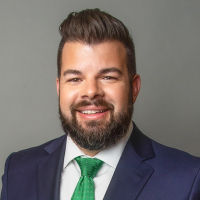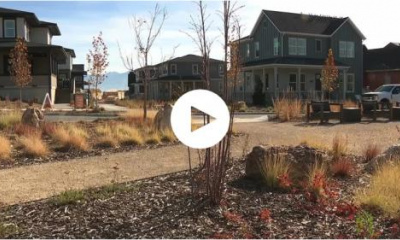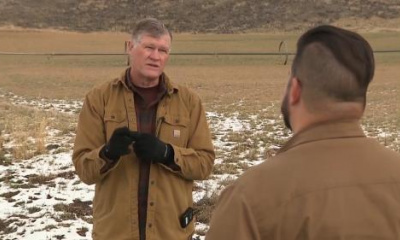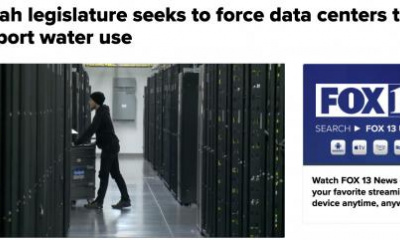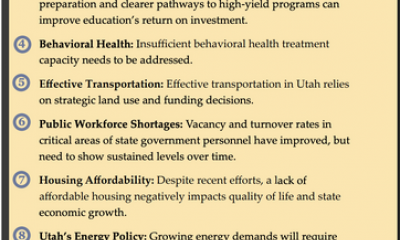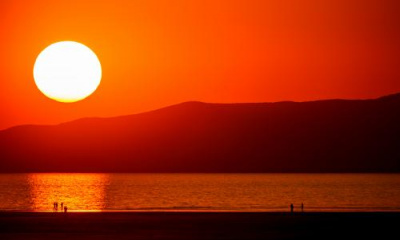Following a massive donation of water shares to help save the Great Salt Lake, a high-ranking official with The Church of Jesus Christ of Latter-day Saints said they were exploring ways to do more.
SALT LAKE CITY — Following a massive donation of water shares to help save the Great Salt Lake, a high-ranking official with The Church of Jesus Christ of Latter-day Saints said they were exploring ways to do more.
"We have lots of water resources. We’ve been here a long time, since 1847. So we're looking at what can reasonably be used," said Bishop W. Christopher Waddell, First Counselor of the Church's Presiding Bishopric.
The Church's gift of 5,700 shares of water to the Great Salt Lake earned applause from a crowd at a symposium on the future of the lake at the University of Utah. The water shares, which are about 20,000 acre feet (enough to fill a reservoir) are permanent and in perpetuity. Bishop Waddell told FOX 13 News in an interview on Friday that he hoped it would inspire others to give water to the lake.
"We’ve been complimented for the donation. However, we realize if that’s all that takes place, it’s not going to accomplish what needs to be accomplished. It’s really a first step and an invitation and an example to others to look at what is possible," he said.
The Church is looking at properties and water shares it owns in the counties that surround the Great Salt Lake for future donations.
"The idea is not to donate something to donate. The idea is to donate what is appropriate to make a difference," he told FOX 13 News. "And so we’re in the process of doing that research. It’s hard to say how much that will be, how little that will be. We hope it will be significant."
Marcelle Shoop, the saline lakes director of the Audubon Society, said the Church's donation is an example of what can be done to help the Great Salt Lake. Shoop administers a multi-million dollar trust that was created by the Utah State Legislature to buy or lease water rights for the lake itself.
"It’s just a great way to start this work and and continue it for the long term," she said Friday.
The Great Salt Lake hit its lowest point in recorded history last year as a result of water diversion, drought and climate change. It presents an existential threat to northern Utah with arsenic-laced dust storms from an exposed lake bed, reduced snowpack that harms the water supply, harms to wildlife, public health and Utah's economy. The impact of it all has alarmed political leaders who have passed legislation and spent more than $1 billion over the past two years aimed at water conservation and helping the lake itself.
"We’ve not solved this problem, but we started to turn the page in terms of having the right strategy in place," House Speaker Brad Wilson, R-Kaysville, told FOX 13 News on Friday.
Salt Lake City is exploring a major donation of billions of gallons of water to the lake when it completes construction on a new wastewater treatment plant, Mayor Erin Mendenhall said. She has also ordered an audit of city-owned properties to see where they can make water savings.
"We've done a lot conserving, not only as a city but as Salt Lakers, almost three billion gallons last year," Mayor Mendenhall told FOX 13 News. "But we need to do these things in perpetuity not just because we’re electing to turn the faucet off more often."
The mayor said Salt Lake City would also enact a special "drought surcharge" on high water users.
"It's temporary, and it's intended only to affect the highest water users in the system. But do expect if you’re one of those high water users who keeps your grass really nice and lush into July and August? It’s going to cost a lot more," she said.
Bishop Waddell said the Church has been making water-saving cuts at its meetinghouses and temples statewide, replacing landscaping to be more drought-friendly and reducing water use. He pointed to Temple Square, which is undergoing a major renovation. Fountains are being replaced with trees, less turf and water-wise plants.
"That’s going to be very different than it was before. It will be beautiful, but there will be significant reduction in water usage. That was purposeful. That was intentional," he said.
The Church has also created an office to focus on environmental sustainability, he told the symposium and urged people to practice water conservation. In a speech at that same event, Governor Spencer Cox pushed back at critics of the Church as well as those who mocked his call for Utahns of all faiths to pray for relief in the ongoing drought.
"These are moments we should celebrate because in celebration we inspire others to do and make change. Whether the change is small or big, we have to celebrate the change to bring people along," he told the crowd. "I would also encourage you not to mock people and their religious views. Whether you believe or don’t, we do live in a state that is highly religious."
The governor said in his speech that where politics is often divisive, saving the Great Salt Lake has united people. In response, the environmental group Utah Rivers Council criticized Gov. Cox's speech and accused state leaders of not doing enough to get water into the lake.
"Our state leaders have failed to solve the Great Salt Lake crisis because they have turned their back on meaningful solutions to put water in the lake," Utah Rivers Council Executive Director Zachary Frankel said in a statement. "Lip service has no impact on the lake. We need six million acre-feet of water for the lake, not sympathy and promises."
But presentations at Friday's symposium outlined a long list of policies and efforts to try to help the Great Salt Lake, including $200 million to get Utah's largest water user — agriculture — to switch to water-saving technologies to grow crops.
"What we need to focus on is getting all this money invested and implemented and put to work," Speaker Wilson told FOX 13 News when asked what else can be done. "Utahns have been remarkable. They understand the magnitude and importance of this."


